Category Archive: Uncategorized
Eli Whitney, the inventor of the cotton gin, is credited with the concept of interchangeable parts. During a presentation to the United States Congress in 1801, he illustrated how all of the components needed for an assembly should be produced according to a set of exacting standards— in other words, to specific dimensions and tolerances—thus ensuring that the firing pin or gun barrel from one musket will fit into any other musket. His idea helped pave the way for the Second Industrial Revolution and what became known as the American System of Manufacturing, which has the standard method of part design and print for almost two centuries.
Although the concepts of component interchangeability and dimensional tolerancing have since become an accepted part of manufacturing, unfortunately, the lack of understanding and proper use of dimensional tolerancing can cause many problems. For instance, an overly stringent tolerance might require that parts go to a secondary operation and/or extra “finishing” passes, unnecessarily increasing costs and lead-time. Tolerances that are “too loose” or that aren’t in line with those of mating parts can make assembly difficult if not impossible, leading to required rework, or in the worst case, making the finished product unusable.
To help avoid these unpleasant situations, this design tip includes some guidelines on how to properly apply part tolerances, along with a few definitions of the more commonly used callouts.

The World of Engineering Thermoplastic and Thermoset Materials – How They Differ From Metals
First, it is important to understand that, unlike metals and ceramics, with engineering thermoplastics the property-determining particles are not atoms, atomic cores and ions, but organic macromolecules, and this differs greatly as compared to the lattice structure of metals.
These macromolecules can also differ within a plastic in terms of their size and chemical structure, meaning that these factors exert a far wider influence on the properties of the material as compared to metals. Most plastics are termed “semi-crystalline”, meaning they have both crystalline and amorphous structures within the material. Such a complex structure enhances some properties (such as impact resistance), but always results in compromises in material stability as compared to metals.
As a result of these differences, plastics offer lower dimensional stability in comparison to more historically specified
- Non-metallics have higher coefficient of thermal expansion, lower rigidity and greater elasticity
- The moisture absorbing properties of plastics, which can result in phenomena such as swelling of the material and the respective dimensions, also have a determining role to play (particularly in the case of polyamides [nylons]).
Combined, these attributes add to the difficulty of adhering to very tightly specified tolerances during machining, in shipment and in storage. Therefore, proper storage of engineering thermoplastic components over a long period of time (especially in summer months) is required to maintain the dimensions achieved during machining. High heat (over 80F), especially combined with high humidity, is to be avoided.
To a lesser extent, this is also true of thermoset materials – the various “phenolic” formulations. The fabric or fiberglass matrix makes these more stable than thermoplastics, but still less than metals.
The recommended guideline to use when determining machining tolerances is a minimum of 0.2% of the nominal value (Tighter tolerances are achievable when using very stable and fiber-reinforced composite materials).
Standardized Tolerances for CNC Machining
At WS HAMPSHIRE, our standard machining tolerance is +/- 0.005 in. (0.13mm) on standard L/W/T dimensions. Hole locations and other critical dimensions can be held more closely. This means any part feature’s location, width, length, thickness, or diameter will not deviate by more than this amount from nominal. For example, the 1 in. (25.4mm)-wide bracket you’re planning to order will measure between 0.995 and 1.005 in. (25.273 and 25.527mm) across, while the 0.25 in. (6.35mm) hole on one leg of that bracket will come in at 0.245 to 0.255 in. (6.223 to 6.477mm) diameter.
When specifying feature locations, be sure to reference the datums, or “start measuring from here”, points. This is usually from one or more edges, making clear where the centering point of a given feature needs to be located.
Something that usually helps in those discussions is sending us an assembly drawing, and/or drawing of mating parts. This allows cross-reference and can prevent “tolerance creep”, which is where individual tolerances all tend to one side which can hinder part alignment, especially at attachment points.
Tolerancing Guidelines for CNC Machining
Also, be aware that these are bilateral tolerances. If expressed in unilateral terms, the standard tolerance would read +0.000/- 0.010 in. (or +0.010/- 0.000 in.) while a limit-based tolerance in our bracket example would be 1.005 / 0.995 in.
All are acceptable, as are metric values, provided that you spell them out on the design. And to avoid confusion, please stick with one system and use “three place” dimensions and tolerances, avoiding the extra zero in 1.0000 or 0.2500 in. unless there’s an overriding reason to do so, which may require further discussion.
Surface Roughness Considerations for Machining Tolerances
There’s more to part tolerancing than length, width, hole size, etc. There’s also surface roughness, which in the standard offering is equal to 63 µ in. for flat and perpendicular surfaces, and for curved surfaces, 125 µ in. or better.
This is an adequate finish for most uses, but for cosmetic surfaces on certain parts, we’re generally able to improve appearance through adjusting the feeds and speeds of the equipment. For wear surfaces, the material will smooth out during operation. If aesthetics are important, that needs to be specified on the print and understood (samples always help!)
Geometric Dimensioning and Tolerancing
Here’s another consideration. As mentioned earlier, we can accept GD&T tolerancing. This provides a deeper level of quality control that includes relationships between various part features as well as form and fit qualifiers. Below are a few of the more common ones:
- True position: In the bracket example cited earlier, we called out the hole location by specifying X and Y distances and their allowable deviation from a pair of perpendicular part edges.
- Flatness: Milled surfaces are generally quite flat, but due to internal material stress or clamping forces during the machining process, some warpage can occur once the part has been removed from the machine, especially on thin-walled plastic parts. A reasonable GD&T flatness tolerance controls this by defining two parallel planes within which a milled surface must lie.
- Cylindricity: For the same reasons that most milled surfaces are quite flat, most holes are quite round, as are turned surfaces. However, using a +/- 0.005 in. (0.127mm) tolerance, the 0.25 in. (6.35mm) hole in the bracket example could potentially be oblong, measuring 0.245 in. (6.223mm) one way and 0.255 in. (6.477mm) the other. Using cylindricity—defined as two concentric cylinders inside of which the machined hole must lie—manufacturers eliminate this unlikely situation.
- (NOTE – due to composites higher coefficient of linear thermal expansion, sometimes a slight “slot” is preferred as it allows part movement without buckling)
- Concentricity: The rings on a bullseye are concentric, just as the wheels on your car are concentric to the axle. If a drilled or reamed hole must run perfectly true to a coaxial counterbore or circular boss, a concentricity callout is the best way to assure this.
- Perpendicularity: As its name implies, perpendicularity determines the maximum deviation of a horizontal machined surface to a nearby vertical surface.
There are additional considerations to GD&T, including parallelism, straightness, profile, and angularity, all of which should be indicated on the print. Again – composites are less rigid than metals, and slight irregularities will conform to the mating surfaces, so avoid using “metal-think” when specifying these additional features.
Summary
- Remember that composites are less structurally stable than metals, which requires composite-specific tolerancing but also allows for greater conformability with mating parts
- Don’t over-specify tolerances that aren’t actually required, it adds cost rather than functionality
- Fine-tuning tolerance dimensions in your designs for CNC machined parts can help maximize those parts’ quality and reduce cost
We at WS HAMPSHIRE are happy to discuss appropriate part dimensioning, as well as material alternatives and other design considerations with your design team – with over 125 years of non-metallic manufacturing experience, we can help! Give us a call!
Fiber-reinforced plastic (FRP) is a composite material characterized by its robustness and versatility. It is an important material in numerous construction and civil engineering applications, including electrical insulation, structural components, bearing and wear applications, and metal substitutes. To see if it’s the right material for your project, learn more about the characteristics of FRP material and how it is made.
FRP Material Characteristics
FRP is a composite material that consists of a polymer matrix and reinforcing fibers, typically glass or carbon. This unique blend offers an effective alternative to traditional materials like wood, steel, or aluminum, which can degrade over time. FRP is renowned for its strength, lightweight nature, and corrosion resistance, making it a prime choice for many applications.
FRP material offers an impressive array of features that cater to a wide range of industrial needs:
- Corrosion resistance: This makes FRP perfect for harsh environmental conditions.
- High strength-to-weight ratio: FRP is ideal for applications requiring durability without the added weight.
- Parts consolidation and design flexibility: Because of its strength, lightness, low thermal conductivity, and other properties, FRP can replace multiple materials and fasteners in an assembly, improving design flexibility.
- Radar transparency: Glass-fiber-reinforced plastics are transparent to radar equipment, so they are often used in enclosures or canopies to hide communications devices in buildings.
- Fire characteristics: FRP can be engineered to meet various fire codes in building construction.
- Non-conductivity: FRP made with glass fibers are non-conductive and often used as electrical insulation.
- Dimensional stability: Many FRP materials can be engineered to have a zero coefficient of thermal expansion, meaning they will not expand or contract as the temperature changes.
- Production repeatability: FRP products have good consistency across high-volume production runs.
- Customizable appearance: The composite material can be designed to meet any aesthetic requirement.
How Is FRP Material Made?
FRP is made through pultrusion, which melds raw fibers and resin to forge a composite with the strength of steel but without the high weight. The pultrusion process is as follows:
- Material selection: First, the appropriate fibers and resin are selected. The choice depends on the application’s requirements, like strength, flexibility, corrosion resistance, and thermal insulation. Fibers could be glass, carbon, or aramid, each offering distinct properties to the composite. The resin, acting as the matrix, could be polyester, vinyl ester, or epoxy, based on the environmental resistance required and the mechanical properties desired.
- Mold or tool preparation: A mold or tool must be prepared. This step is crucial as it defines the FRP’s dimensions, shape, and surface finish. Molds can be made from metal, composite, or plastic, and they must be cleaned and coated to prepare for resin infusion.
- Layup or preform process: During this stage, the fibers are laid out or pre-formed according to the direction and orientation needed for optimal strength and performance in the final product.
- Infusion: The laid-out fibers are infused with resin, ensuring every fiber is thoroughly saturated. This process is critical for creating a cohesive and uniform material where the resin matrix supports the fibers, providing strength and durability.
- Curing: After the fibers are infused with resin, the composite needs to be cured—a process that solidifies the resin, binding the fibers into a solid mass. This step can occur at room temperature or be accelerated using heat. The curing process transforms the soft and malleable resin-fiber mixture into a rigid and sturdy material that retains its shape under physical stress.
- Finishing: The final stage involves applying the necessary finishes to the FRP, like trimming, drilling, painting, or coating for aesthetic purposes or additional protection. This process guarantees the FRP meets the specific requirements for its use.
FRP From WS Hampshire
FRP offers a unique blend of strength, versatility, and durability. Its unique characteristics make it an ideal choice for many applications, from infrastructure projects to innovative designs in the automotive industry. With over 100 years in the nonmetallic materials fabrication industry, WS Hampshire is a leading provider of FRP materials, Ryertex® and EXTREN® product lines.
Contact us or request a quote to discover how our expertise and products can meet your specific needs.
Thermosets are insoluble, polymer-based materials with high-temperature melting points. Typically possessing superior strength compared to that of thermoplastics, thermoset materials undergo a chemical reaction at a certain temperature and reach a solid state upon curing. From that point on, the properties of these synthetic composites are “set,” resulting in materials that are unlikely to deform or degrade.
Thermosets have a strong structure of interconnected molecules; upon heating, these molecules develop irreversible bonds. Should you reheat thermoset plastics, they will char or burn rather than melt or take on their original characteristics. While this prevents remolding, it lends a high degree of mechanical strength to components with thermoset construction. Learn more about these materials, their properties, and potential applications.
Thermoset Materials
When selecting the right thermoset composite materials for your project, there are multiple high-performance options to choose from. Common examples of thermosetting materials include the use of the following:
Resin
- Phenolic
- Epoxy
- Melamine
- Polyester
- Polyurethane
- Silicone
Substrates
- Paper
- Canvas
- Linen
- Fiberglass
- Aramid
Thermoset Properties
Thermoset materials have many advantageous properties that make them ideal for widespread applications. These properties include:
- Superior mechanical strength. Thermosetting plastic materials typically feature enhanced mechanical properties. Their beneficial stiffness along with their high compressive and tensile strength lend these materials to applications requiring load-bearing or structural components.
- Lasting dimensional stability. Thermosets retain a consistent size and shape after curing, keeping them dimensionally stable for use in applications necessitating precise manufacturing and engineering.
- Resistance to high temperatures. One of the main benefits of thermoset plastics is their thermal resistance capabilities under high temperature exposure. They won’t soften or otherwise deform, which is particularly helpful for electronic and automotive applications that experience high heat.
- Resistance to chemicals. Thermoset plastic materials often possess high chemical resistance, allowing them to withstand corrosion even when they come into direct contact with such substances.
- Being electrically insulative. Many electrical applications use these materials to provide sufficient component insulation and protection. They help prevent arcing and keep the flow of electrical current from where it’s not intended to be. In applications like power lines and transformers, thermosets can reduce the risk of fires.
Applications of Thermoset Materials
Thermoset materials have a wide range of applications across diverse industries. Some common examples include the following:
- Aerospace. Lighter air- and spacecraft perform better and use less fuel. Lightweight yet strong, thermosets are an optimal choice for manufacturing aerospace components.
- Automotive. Brake pads, engine parts, and exterior chassis components often utilize thermoset materials because of their superior durability and ability to withstand high temperatures.
- Construction. Adhesives, coatings, and composite reinforcements are among the different types of construction materials made with thermoset plastics. These applications benefit from the durable materials’ resistance to corrosive chemicals and heat.
- Electronics. Electronic circuits and parts rely on thermoset materials for protection and insulation, keeping equipment consistently safe from moisture and heat buildup.
- Healthcare. Thermoset materials are typically biocompatible, making lasting medical implants and devices that won’t react when they come into contact with the human body.
- Sports equipment. Anything from bicycle frames to golf clubs can benefit from thermoset plastics’ good strength-to-weight ratio and wear resistance.
- Heavy Industry. Bearings, Bushings, Structural & Wear Components. Replaces traditionally used metals like steel, brass, bronze.
Thermoset Materials and Components From WS Hampshire
The right thermoset material will offer high-quality fabrication solutions for your product, resisting heat, chemical corrosion, and general wear. At WS Hampshire, we specialize in the custom fabrication of Ryertex Thermosets and Timco Technical Thermoplastics for industrial applications. Our Ryertex brand of thermosets consists of multiple fiber-reinforced plastic composite options. Since their introduction in the 1930s, these materials have been particularly helpful as electrical insulators and in high-temperature, -speed, or -load applications as an alternative to metal components for resisting wear.
Since the 1890s, WS Hampshire has combined innovative and reliable non-metallic materials, our team’s technical expertise, and a suite of comprehensive services to deliver valuable solutions and high-quality components to our customers. It’s our goal to help you reduce operational downtime and costs. Contact us today to learn more about our thermoset material options and our production capabilities for supporting your unique operation.
Industrial laminates are used in a wide range of commercial and industrial applications. WS Hampshire specializes in laminate fabrication, and our Ryertex® composite laminates and TIMCO Technical Plastics brands are known as the best in the industry. From electrical circuit boards and structural panels to bearings, bushings, and wear parts, our industrial laminates deliver reliable performance across diverse industries.
Overview of Industrial Laminates
Industrial laminates are created by stacking multiple layers of materials, typically with a decorative layer on top and a supportive substrate on the bottom. The middle layers may be fabric, paper, or glass fibers bonded together with high-quality thermosetting resins. By combining specific substrates and resins, you can produce properties that aren’t present in the individual substrates or resins alone.
The resulting sheet material is durable and features high mechanical strength, electrical insulation, machinability, and more. The materials used to create the industrial laminate vary by application and the associated demands placed upon the thermoset composite. These applications include:
- Bearings
- Electrical transformers
- Fixtures
- Gears
- Jigs
- Thermal breaks
Benefits of Industrial Laminates
Industrial laminates are trusted because of their unique and customizable characteristics. With the right combination of phenolic, melamine, silicone, or epoxy resin and substrates like canvas, paper, linen, aramid, or fiberglass, you can customize your laminate solution to fit the specific demands of the application. When aesthetics matter, the laminate can include a decorative top layer. Other benefits include:
- Durability: Industrial laminates can withstand heavy use without deforming or showing signs of wear. They’re lightweight relative to their strength.
- Chemical Resistance: Certain laminates can be safely and reliably used in environments where they’re exposed to chemicals.
- Impact Resistance: Industrial laminates are known for their impact resistance and are commonly applications such as steel rolling mills.
- Machinability: Industrial laminates are easy to work with and are easily machined to suit specific applications and environments.
- Electrical Insulation: This prized characteristic makes industrial laminates suitable for a range of electromechanical applications.
Ryertex Industrial Laminates
Originally known as Bakelite, Ryertex is a group of phenolic thermoset laminate products that were first developed in 1907 by Leo Baekeland. Ryertex has evolved over the years and is now used in everything from electronics to heavy equipment. Traditional applications using Ryertex include buttons, frying pan handles, and telephone mouthpieces. Today, the Ryertex® family of fiber-reinforced plastic composites include a variety of substrate and resin combinations for mechanical, electrical, and heavy industrial applications like bearings, wear liners, structural components, and electrical insulation.
We also offer other phenolic composite materials, such as Arboron, Resiten, TOPLAB® PLUS, TOPLAB® BASE, TOPLAB® VERTICAL, and Virtuon® sheets.
Rely on WS Hampshire for Industrial Laminate Fabrication
As a custom fabricator of industrial laminate composites, WS Hampshire has worked with companies in a variety of industries, including paper and lumber processing, oil and gas, forestry, wire and cable, mining equipment, material handling, food and beverage packaging and processing, and more. We have global access to raw materials, and with our extensive capabilities, there is no limit to the sizes, shapes, quantities, and materials that we can produce. We’re here to help with your most complex challenges.
Contact us today to learn more about industrial laminate fabrication, or request a quote for your project.
Aeroponics is a technique used for indoor cultivation in a controlled environment. There is no growing media like soil or coco and the water tanks so well known in hydroponics are eliminated. In aeroponics, plant roots are suspended in air and fed directly by a nutrient rich water mist. Because there is no media, plants do not expel energy searching for oxygen and nutrients, which means that grow faster and with higher yields than in other methods. The use of mister systems allows for reduction in water consumption of up to 95%.
Aeroponics was greatly advanced by NASA in the 19990’s for growing in space and is now extremely common for growing vegetables in urban environments. The technique has long been used in the Clone stage of cannabis cultivation and is now becoming commonplace through the Veg and Flower stages. High levels of grower control, the ability to grow vertically, and massive reductions in water consumption make aeroponics highly favorable.
You can learn more on this page or this episode of cannacribs.
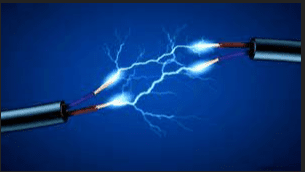
Electrical insulating materials from WS Hampshire take many forms and serve a wide range of application. From polyester film used in the lighting industry, to corrugated vulcanized fiber in large transformers, to high temperature composites in the electric arc furnace of a modern steel mill. Our extensive capabilities allow us to slit, roll, punch, form or CNC machine insulating materials into parts per your specifications.
Contact us today to learn more about how our material and fabrication expertise can help you and your team.
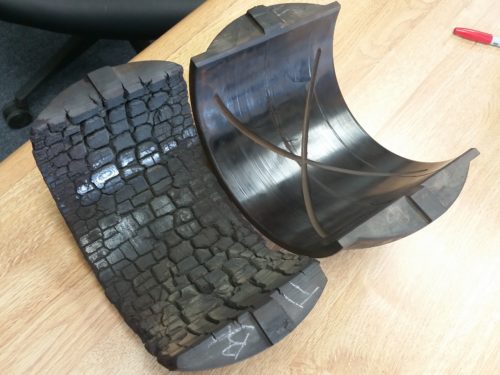
It may be ugly, but this Ryertex bearing was NOT A FAILURE! Follow here to see how this bearing set replaced bronze and gave one mill the ability to reduce the risk of tens of thousands of dollars in lost production and damaged equipment.
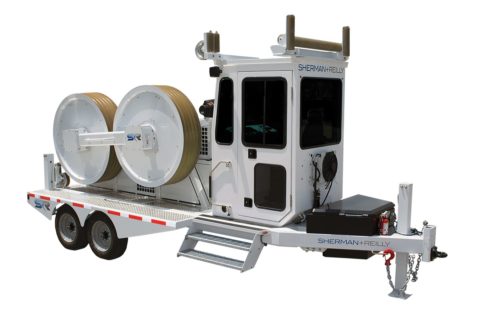
Cable pulling equipment in the electric, telecommunications, and related industries use rollers to support the line being installed and for directional changes to protect the line from damage. This includes support blocks, snatch blocks, corning arrays/quadrants, and boom point roller-type sheaves on a variety of stringing equipment extensions. These rollers were initially made of steel or aluminum, but corrosion damaged lines and safety concerns due to part weight led to changes. Rubber and urethane rollers have been used, but they have limitations caused by weathering, chemical attack, and wear.
Using nylon in place of steel, rubber, or urethane allows for improved performance and operational efficiency as nylon rollers are lightweight and will not cause damage your cable due to corrosion and wear.
What applications are you working on where this may apply?
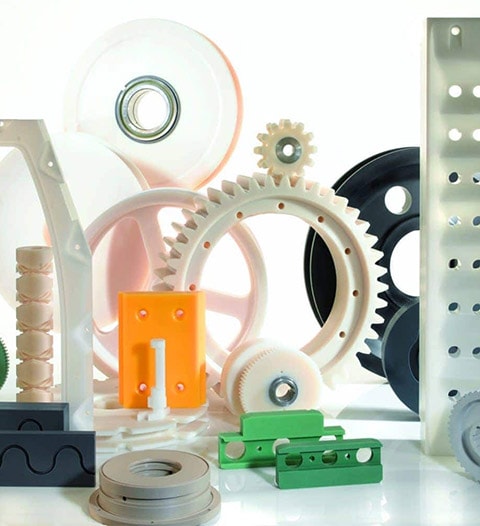
Engineering plastics are a form of polymer that are well known for their high mechanical strength, versatility, and ability to be melted and reformed into other shapes. For decades, engineers have seen plastics replace metal in applications where weight reduction, corrosion resistance or low coefficient of friction is needed to reduce wear on mating parts.
Plastics are lightweight so they are safer to maintain than steel and can reduce noise and vibration levels. Options exist to produce parts from fiber reinforced polymers as well as those that are self lubricating which can enhance the performance of plastics. These features help provide longer part life for the entire system, leading to cost savings for equipment manufacturers and end users.
For example, a significant reduction in the weight of sheaves and wear pads will increases the lifting capacity of cranes or aerial work platforms and may offer a reduction in power requirements. Additionally, the handling and assembly of these parts is made safer as most plastics are one seventh the weight of steel. Additionally, plastic materials cause very little wear on the contacted surface as seen where wire rope will last two to three times longer when plastic sheaves are used instead of steel. Scheduled maintenance for lubrication of parts is often reduced or eliminated completely when components are manufactured from plastics.
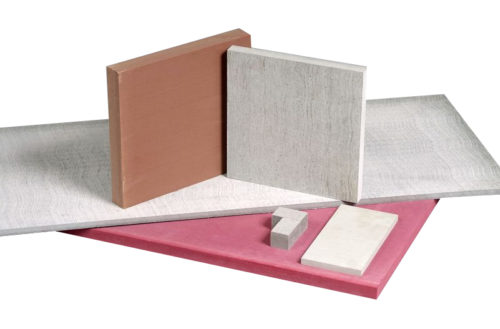
As a full service provider of non-metallic materials, WS Hampshire is not limited to Ryertex and Timco Technical Thermoplastics that you probably know us best by.
WS Hampshire supplies asbestos free thermal insulation boards for applications such as platen presses, foundries, glass handling, molding machines, fire protection, or customized applications with temperatures up to 1,800ºF.
Materials include various Marinite, Glastherm, Transite, Mica, or CS85 and we can provide full sheets, or custom fabricated parts.
Let us know what you are working on today and our team will provide the right insulating board for your specific application.







